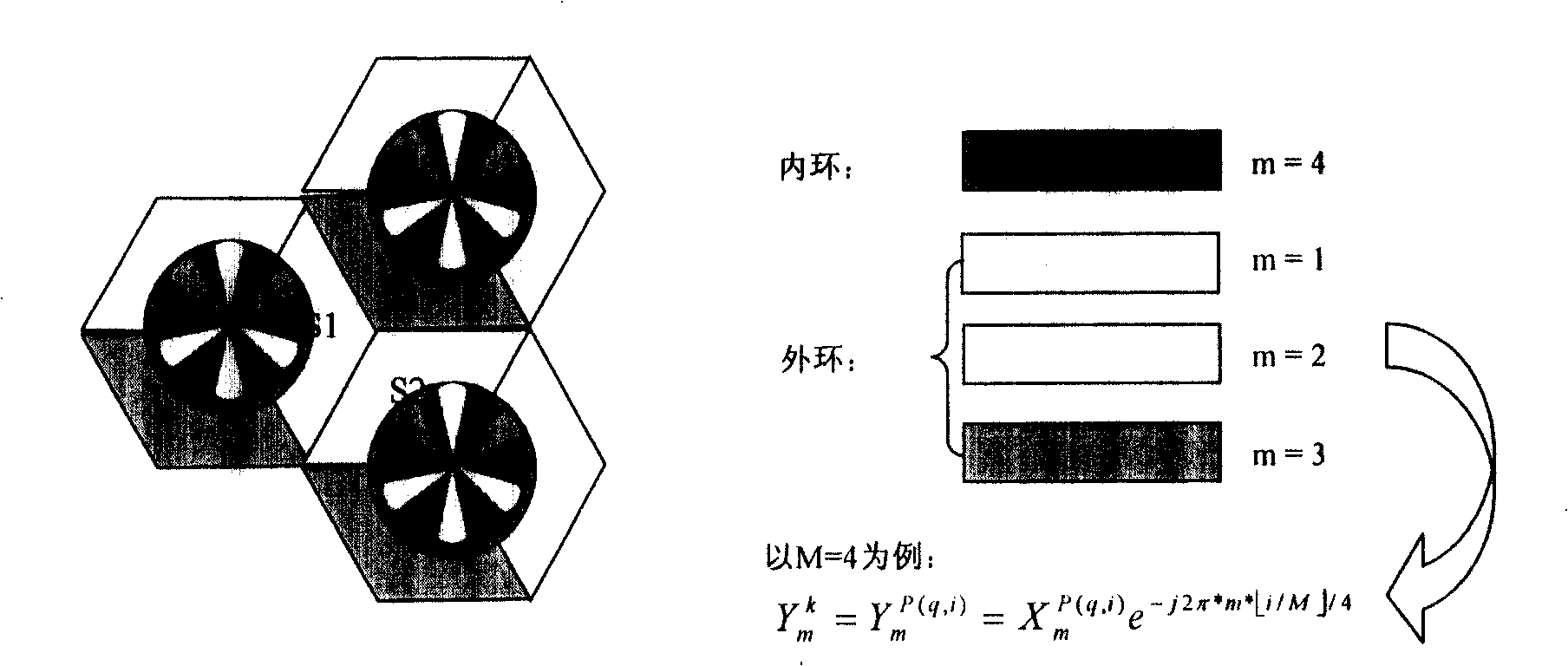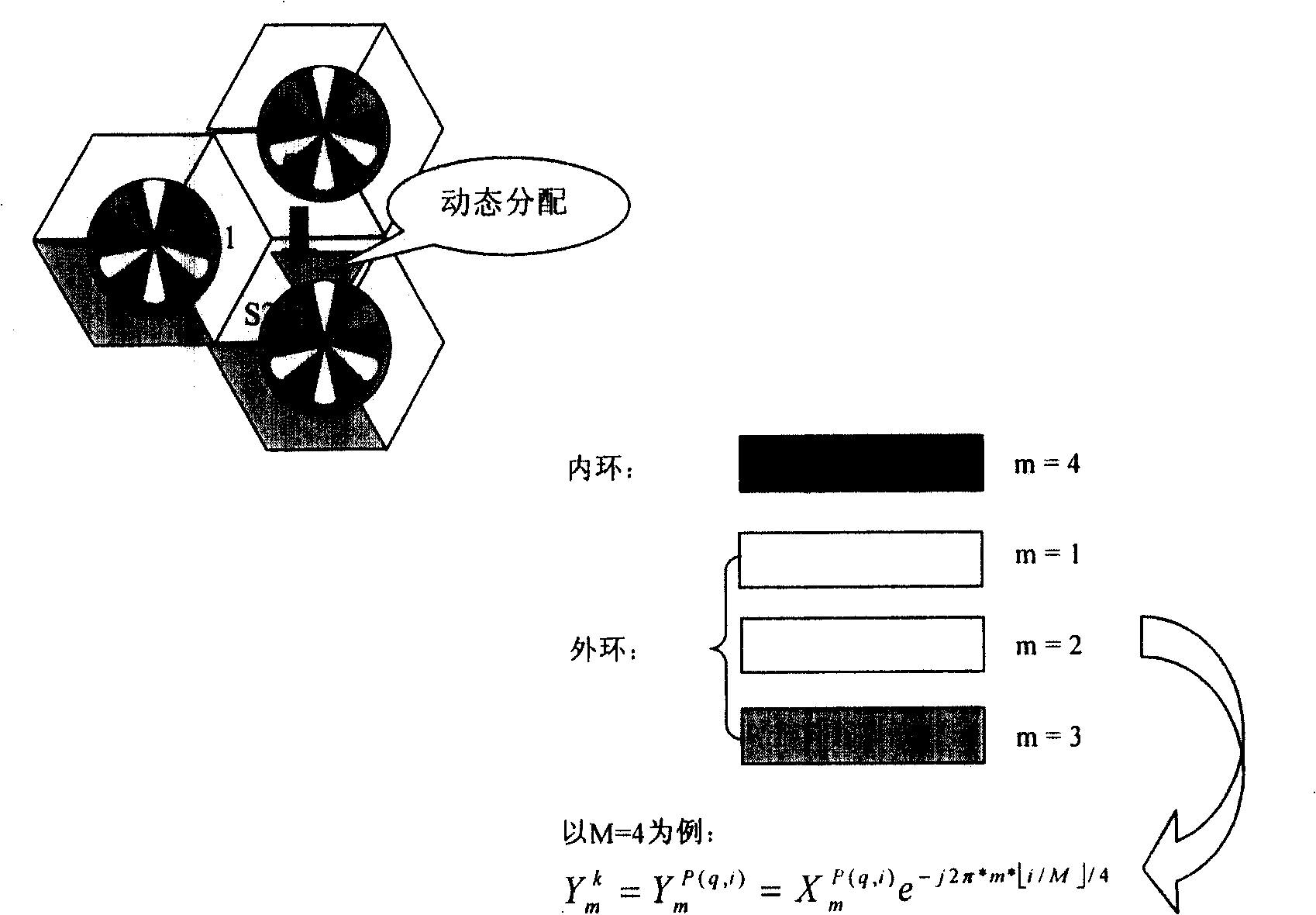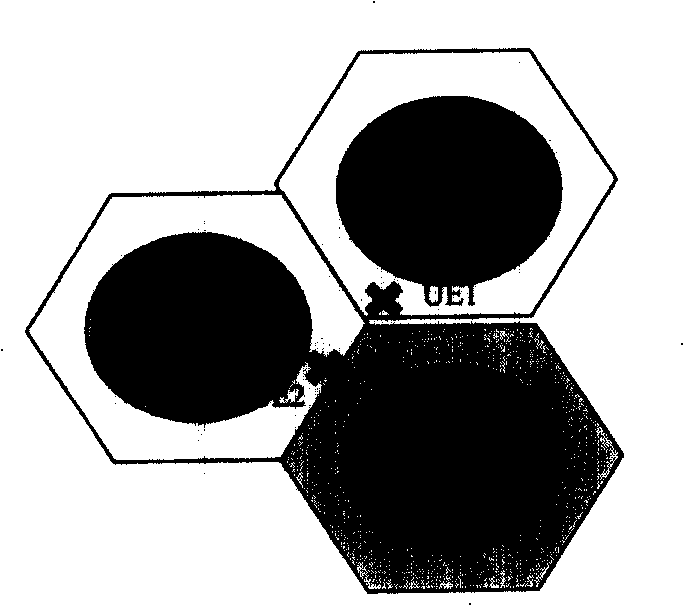Resource allocation method in wireless communication
A technology of resource allocation and wireless communication, applied in the field of information transmission, can solve the problems such as the inability to realize the frequency reuse coefficient cellular system structure, the failure to truly avoid the interference of adjacent cells, and the inability to realize the frequency reuse coefficient, so as to improve the signal-to-interference ratio. , reducing complexity and improving spectral efficiency
- Summary
- Abstract
- Description
- Claims
- Application Information
AI Technical Summary
Problems solved by technology
Method used
Image
Examples
Embodiment
[0024] Without loss of generality, the resource allocation method will be described below by taking M=4 and dividing a sector into two areas, an inner ring and an outer ring, according to space as an example.
[0025] Such as figure 1 As shown, the user equipments at the center of each sector can share the sequence resource m=4. The user equipment at the edge of sector S1 (also known as the outer ring) uses sequence resource m=1, the user equipment at the edge of sector S2 uses sequence resource m=2, and the user equipment at the edge of sector S3 uses sequence resource m=3 . Here, different from the partial frequency reuse method, the frequency reuse factor of three adjacent sectors is 1 instead of 3. Orthogonality between adjacent sectors is achieved through sequence orthogonality. Further, in order to improve the utilization rate of sequence space, the user equipment in the inner ring of sector S1 can also use sequence resources m=2 and m=3, and the user equipment in th...
PUM
 Login to View More
Login to View More Abstract
Description
Claims
Application Information
 Login to View More
Login to View More - R&D
- Intellectual Property
- Life Sciences
- Materials
- Tech Scout
- Unparalleled Data Quality
- Higher Quality Content
- 60% Fewer Hallucinations
Browse by: Latest US Patents, China's latest patents, Technical Efficacy Thesaurus, Application Domain, Technology Topic, Popular Technical Reports.
© 2025 PatSnap. All rights reserved.Legal|Privacy policy|Modern Slavery Act Transparency Statement|Sitemap|About US| Contact US: help@patsnap.com



